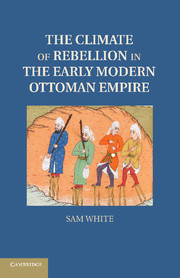Book contents
- Frontmatter
- Contents
- Acknowledgments
- Preface
- Glossary of Ottoman Terms
- Maps
- Introduction
- Part I An Imperial Ecology
- 1 Regions, Resources, and Settlement
- 2 Growth and Its Limits
- 3 Disasters of the Late Sixteenth Century
- 4 Land at The Margins
- Part II The Little Ice Age Crisis
- Part III Ecological Transformation
- Conclusion
- Bibliography
- Index
- References
2 - Growth and Its Limits
Published online by Cambridge University Press: 05 February 2012
- Frontmatter
- Contents
- Acknowledgments
- Preface
- Glossary of Ottoman Terms
- Maps
- Introduction
- Part I An Imperial Ecology
- 1 Regions, Resources, and Settlement
- 2 Growth and Its Limits
- 3 Disasters of the Late Sixteenth Century
- 4 Land at The Margins
- Part II The Little Ice Age Crisis
- Part III Ecological Transformation
- Conclusion
- Bibliography
- Index
- References
Summary
By the late sixteenth century, the Ottoman imperial ecology had begun to fall victim to its own success. After working for generations to settle a land ravaged by centuries of war and plague and to build up its military and capital city, the empire started to face problems of population pressure and resource scarcities. Ottoman numbers soared in the classical age, and agriculture in the core Mediterranean provinces expanded to the limits of arable land. As environmental, social, and technological barriers left the peasantry unable to keep up with rising demand, food production ran up against diminishing marginal returns. While the empire as a whole did not yet face a Malthusian crisis, some regions were approaching the limits of subsistence by the 1580s, and the margin of surplus for provisioning began to dwindle. In the meantime, landlessness, inflation, and unemployment were breeding a new class of desperate and potentially dangerous men.
- Type
- Chapter
- Information
- Publisher: Cambridge University PressPrint publication year: 2011

